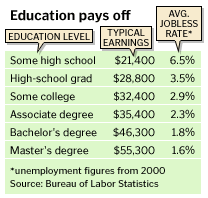GET OUT!
 The American Hiking Society finds the top 10 hiking trails for fitness and exercise; families and kids; and low-impact trail activities.
The American Hiking Society finds the top 10 hiking trails for fitness and exercise; families and kids; and low-impact trail activities.The Centers for Disease Control (CDC) recommends that adults get at least 30 minutes of moderate-intensity physical activity on 5 or more days per week. A 150-pound person hiking at a comfortable 2-MPH rate burns 240 calories in one hour!
 American Hiking's specialists picked trails that are in or near major metropolitan areas (easy to get to before & after work and during your lunch hour). All of the trails have portions that can be completed in 60-90 minutes, and in some cases they are multi-use.
American Hiking's specialists picked trails that are in or near major metropolitan areas (easy to get to before & after work and during your lunch hour). All of the trails have portions that can be completed in 60-90 minutes, and in some cases they are multi-use.Fitness trails provide great outdoor alternatives to gym treadmill workouts.
Their top-ten list, NOT a ranking (DRUMROLL PLEASE!):
10 Great Cities, 10 Heart-Pumping Trails
1. Red Trail - Albany, New York
2. Barton Creek Greenbelt - Austin, Texas
3. Rock Circuit Trail - Boston, Massachusetts
4. Sand Creek Greenway - Denver, CO
5. Burke Lake Trail - Greater Metro Washington, DC (Fairfax/Northern Virginia)
6. Indiana Central Canal Towpath - Indianapolis, Indiana
7. The Long Path - Greater Metro New York City (New Jersey)
8. Black Rock Loop - Phoenix, Arizona
9. Guy Fleming Trails - San Diego, California
10. Coastal Trail - San Francisco, California
So get up and get out(side)!
It's o.k.: Stop reading blogs and shut off your computer now ;-D









 U.S. Department of Labor: Bureau of Labor Statistics
U.S. Department of Labor: Bureau of Labor Statistics










